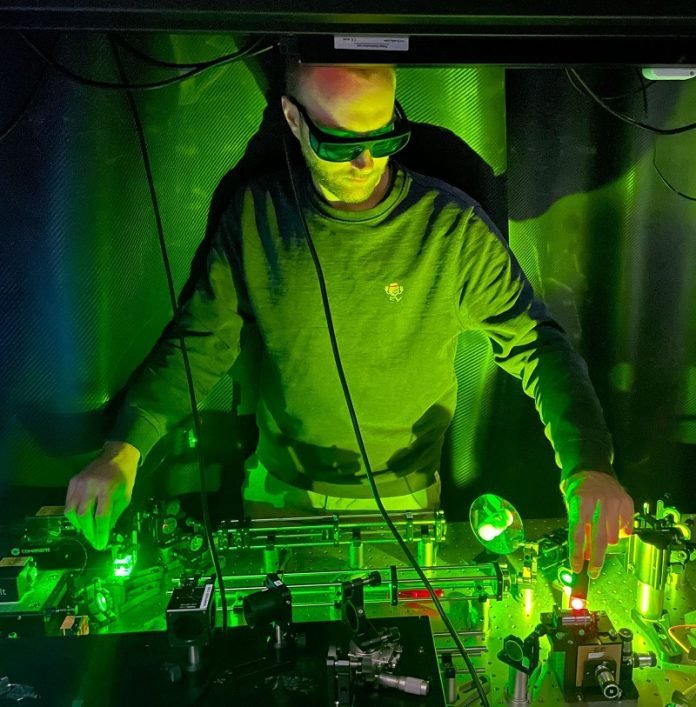
Making movies in a lab isn’t easy, especially when the stars are tiny molecules reacting with each other, invisible to the naked eye.
Special equipment is needed to capture this microscopic action, like filming tiny lava flows during a volcanic eruption.
Prof. Emiliano Cortés, from LMU, explains that regular cameras just won’t cut it.
The effort is worth it because the outcome is a promising energy material called covalent organic frameworks (COFs). These materials have potential uses in battery technology and hydrogen production.
However, after 20 years of research, scientists still don’t fully understand how COFs form. This has led to a lot of trial and error in developing them, as the molecular components must come together just right to form the desired porous structure.
Christoph Gruber, working on his doctoral dissertation in Cortés’s team, has been fascinated by why COF synthesis only works under certain conditions.
To shed light on this, Gruber collaborated with LMU chemist Prof. Dana Medina, who specializes in COF synthesis.
Gruber used a special microscope to film the formation of COFs at the nano level. The team’s groundbreaking results were recently published in the journal Nature, complete with a video showing the real-time processes during COF synthesis.
Successful synthesis of COFs requires precise control over the reaction and the self-assembly of molecular building blocks. Medina explains that this control is crucial for achieving a highly crystalline structure with the desired functionality.
However, the early stages of nucleation and growth have been poorly understood, hindering the development of effective synthesis protocols.
Gruber’s unconventional approach involved using iSCAT microscopy, a technique often used by biophysicists to study protein interactions.
This method works because even tiny particles scatter light, creating interference patterns that can be recorded and analyzed. This allows researchers to capture dynamic processes in real time, providing a live view of the synthesis.
Shortly after starting the reaction, the researchers noticed tiny structures in the transparent reaction medium. These nanometer-scale droplets turned out to be crucial for the synthesis. If these droplets are absent, the reaction happens too quickly, and the desired order is lost.
The iSCAT method allowed the LMU team to film the formation of COFs from the beginning, with sensitivity down to a few nanometers. Existing techniques couldn’t capture these fast, small-scale processes in real time.
Cortés explains that their research has closed this knowledge gap, providing a complete picture of the early stages of COF formation.
The film and resulting analyses led the researchers to develop an energy-efficient synthesis concept. By adding table salt, they significantly reduced the temperature needed for the reaction, allowing the molecular frameworks to form at room temperature instead of 120 degrees Celsius.
The researchers believe their results will transform how we think about COF synthesis and drive advances in industrial production.
Their findings could also impact the synthesis of other materials and chemical reactions not yet observed in real time. The LMU team is excited to continue filming molecular reactions, with more groundbreaking discoveries on the horizon.



